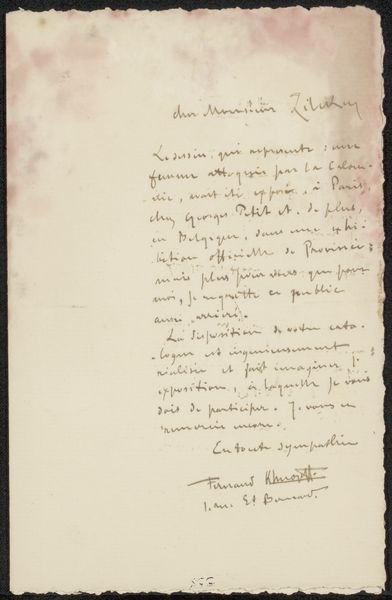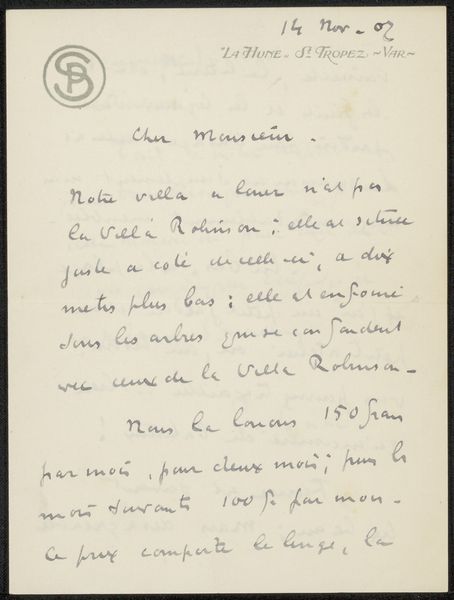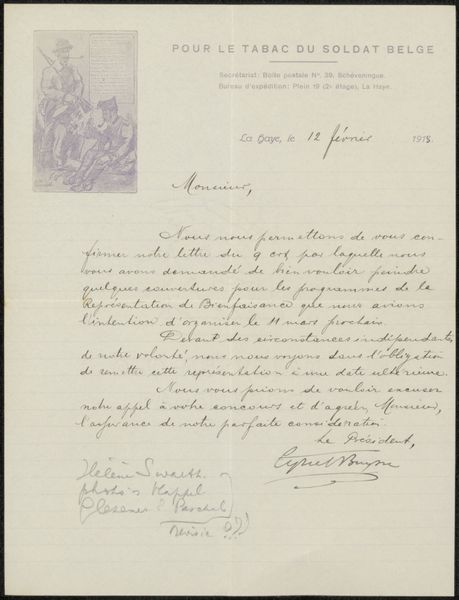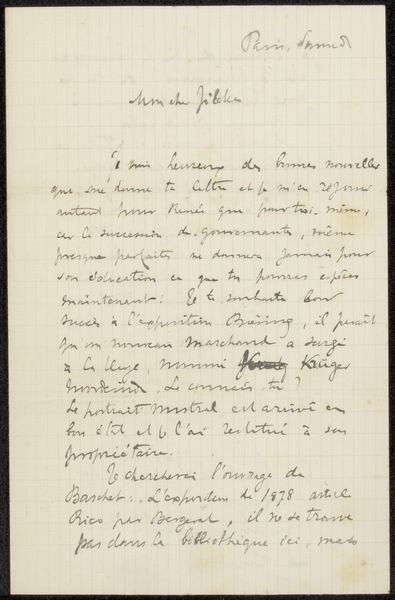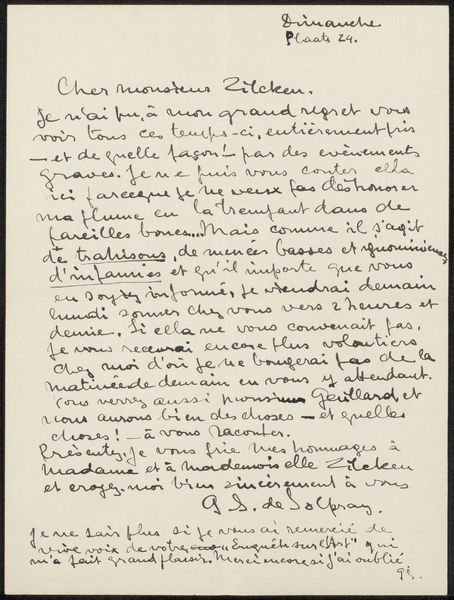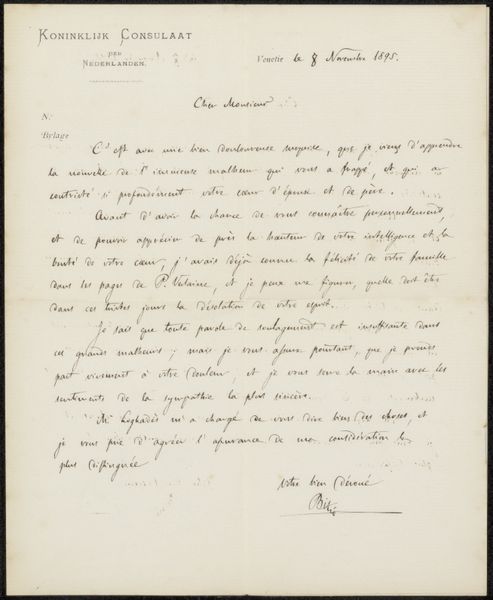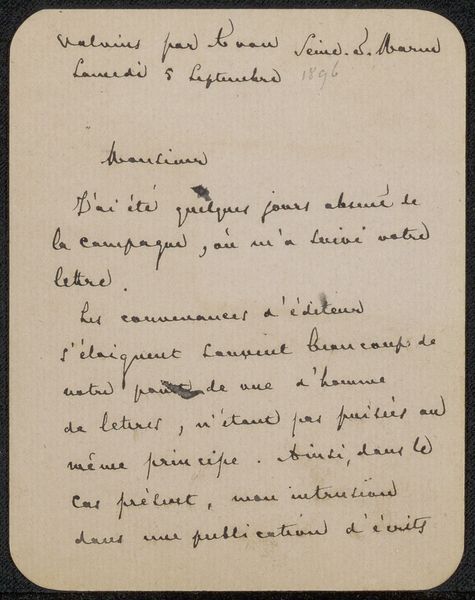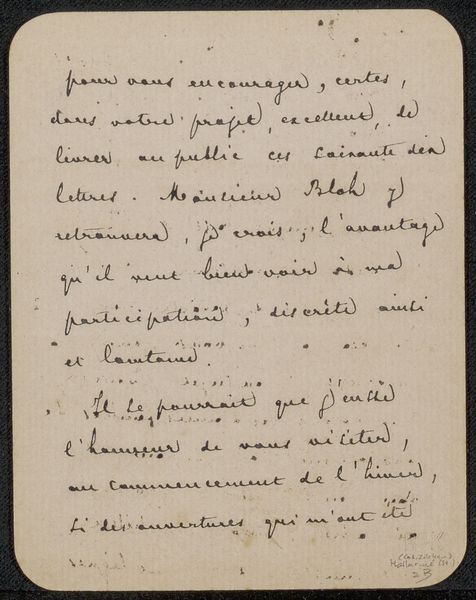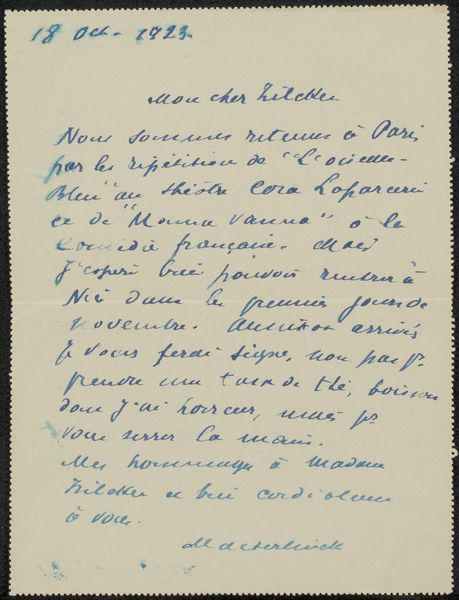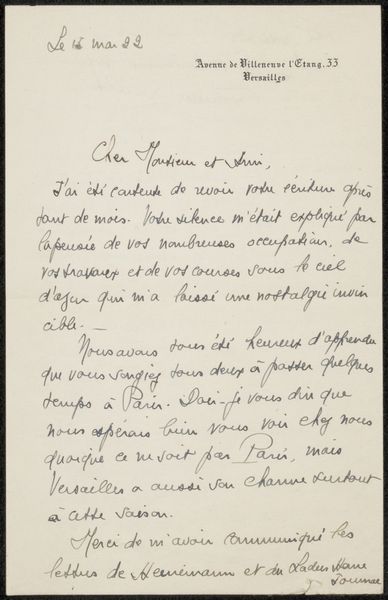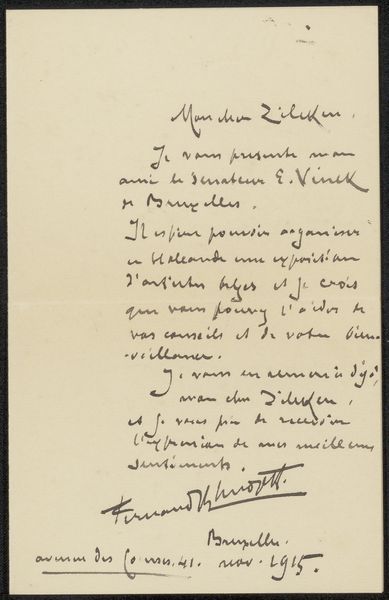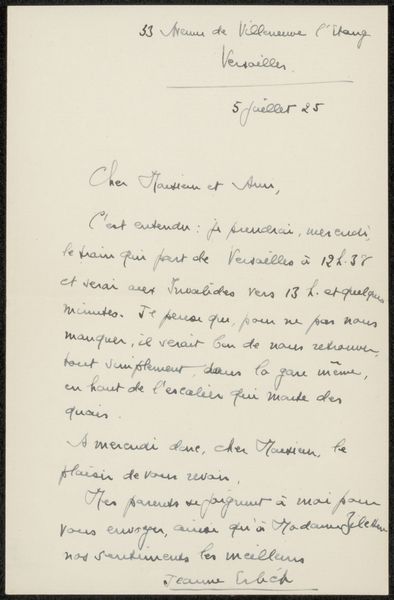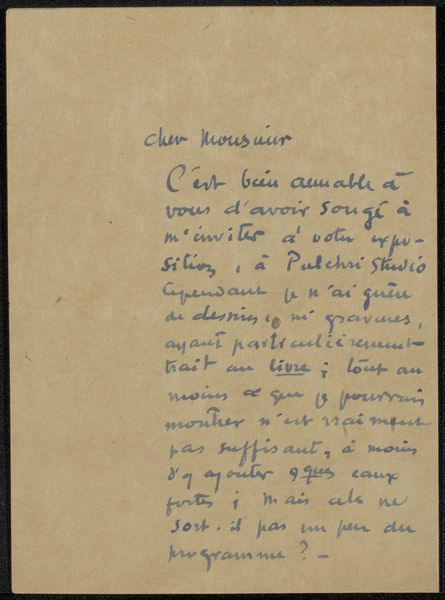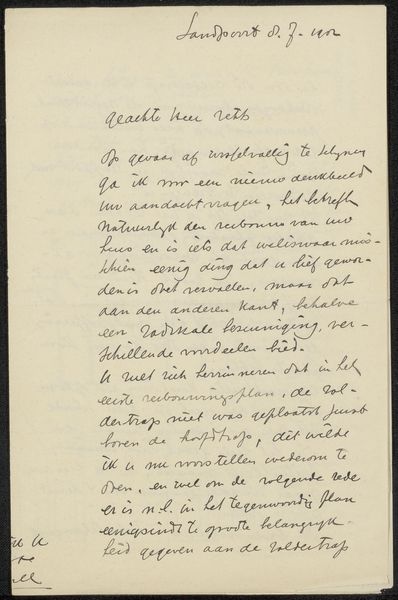
drawing, paper, ink
#
drawing
#
paper
#
ink
#
calligraphy
Copyright: Rijks Museum: Open Domain
Curator: What strikes me immediately is how this seemingly straightforward letter implicates a network of labor, production, and artistic value. We have a drawing made with ink on paper—basic materials—but consider the paper mill, the ink production, the labor involved in handwriting... it’s all hidden yet fundamental to its existence. Editor: This is "Brief aan Philip Zilcken," possibly from 1908, by Gaetano Ballardini. It seems like a simple letter, but it also has elements of a formal drawing in ink on paper. What can we read into its materiality? Curator: Exactly! Think about the purpose of this letter. It's an invitation to participate in an art exhibition. The Bienniale Romagnola d'Arte in Faenza. It relies on the postal service, on Zilcken's literacy, his resources to potentially create and transport artwork. The letter itself becomes part of the larger economic system of art creation and display. Editor: So the letter isn’t just an aesthetic object; it’s deeply embedded in a system of production and consumption? It makes me think about the cost, time, and effort required to even produce and send such a letter. Curator: Precisely. How does the artist’s labor get represented? Is Ballardini, as the secretary, simply a conduit? And consider, too, that it asks for adhesion to ‘la gravure et du deniu.’ The "drawing" of this work and the use of those types of drawing hint at more complex networks for artists. Editor: That gives me a whole new perspective. I usually just see a letter, maybe admire the calligraphy, but I hadn't considered the full extent of the labor and material implications involved. Thank you for widening my view. Curator: My pleasure. Examining the means of production can fundamentally shift how we understand art's place in society.
Comments
No comments
Be the first to comment and join the conversation on the ultimate creative platform.
